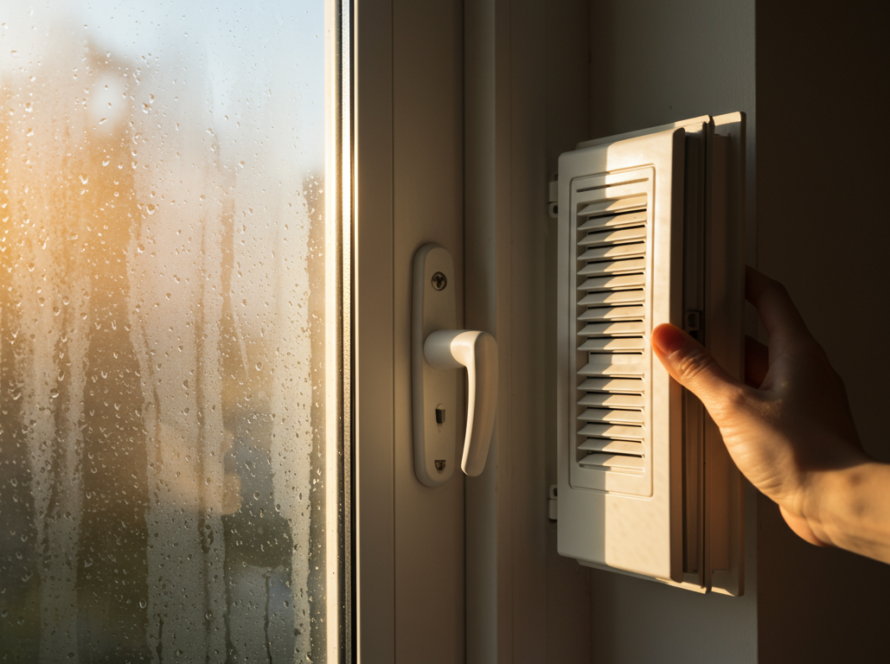As the cold fades away, spring’s fresh air and bright sunshine beckon us to open our windows—literally and figuratively. But before you do, there’s some work to be done. Windows endure months of winter grime, fluctuating temperatures, and occasional drafts. Preparing your windows for spring maintenance ensures they are in top condition to brighten your space, save energy, and boost curb appeal.
In this blog, we’ll guide you through essential maintenance tips to keep your windows looking great and functioning perfectly as we transition into spring.
TLDR – Quick Guide
Preparing windows for spring maintenance? Here’s the gist:
- Inspect for Damage: Check for cracks, gaps, or broken seals.
- Thorough Cleaning: Remove dirt, grime, and winter residue.
- Seal and Weatherproof: Replace worn-out weather stripping or caulking.
- Check Hardware: Tighten handles, replace rusted hinges, and ensure smooth operation.
- Repaint or Treat Frames: Protect wooden frames with fresh paint or a protective sealant.
By following these steps, you’ll keep your windows functioning properly while maximizing energy efficiency.
Detailed Breakdown
1. Inspect for Winter Damage
Winter weather can leave windows with cracks, gaps, or compromised seals. Inspect every pane for signs of:
- Cracks: Even minor ones can compromise energy efficiency.
- Gaps: Check between frames and walls.
- Condensation: Fogging between double-paned glass could indicate broken seals.
Fixing these issues early prevents escalating costs and improves home insulation.
2. Deep Clean Your Windows
Spring cleaning isn’t complete without spotless windows! Here’s how:
- Use a mix of warm water and vinegar for streak-free glass.
- Don’t forget the frames—grime buildup can weaken the material over time.
- Clean screens separately by scrubbing gently with soapy water.
Pro Tip: Dry glass with a microfiber cloth to avoid streaks.
3. Seal and Weatherproof Your Windows
Winter damage often weakens weatherproofing materials like caulking and weatherstripping. Replace any worn-out materials to:
- Block drafts.
- Improve energy efficiency.
- Prevent water leaks during spring rains.
For DIYers, silicone caulk is an easy-to-use option that holds up well in fluctuating weather conditions.
4. Check and Repair Window Hardware
Broken handles, rusty hinges, or sticky tracks can make operating windows a chore. Take these steps:
- Tighten screws on handles and locks.
- Apply a silicone-based lubricant to ensure smooth sliding.
- Replace corroded or non-functional hardware for longevity.
This quick maintenance step enhances both convenience and safety.
5. Treat and Protect Window Frames
Wooden frames are especially susceptible to damage from moisture and temperature changes. To maintain their durability:
- Sand down peeling paint or rough patches.
- Apply a fresh coat of weatherproof paint or sealant.
- For vinyl or aluminum frames, clean and polish to restore shine.
Maintaining frames not only protects them but also enhances the aesthetic of your home.
Key Takeaways
- Regular inspection can save you from costly repairs down the line.
- Cleaning thoroughly ensures your windows look great and let in the spring sunshine.
- Weatherproofing enhances comfort and energy efficiency.
- Fixing hardware improves usability and safety.
- Treating frames preserves the structural integrity of your windows.
Spring is the perfect time to refresh your windows and welcome the new season with clarity and brightness.
FAQs
-
How often should I perform window maintenance?
Window maintenance is best done at least twice a year—once in spring and once in fall. Regular checks ensure your windows stay in optimal condition through changing weather.
-
What’s the best cleaner for streak-free windows?
A mix of warm water, vinegar, and a drop of dish soap works wonders. Dry with a microfiber cloth for a spotless finish.
-
Can I replace weatherstripping myself?
Yes! DIY weatherstripping kits are available at most hardware stores. Follow instructions carefully for the best results, or consult a professional if unsure.
-
What should I do if my windows have condensation between the panes?
This indicates a broken seal in double or triple-paned windows. The best solution is to contact a professional to repair or replace the glass.
-
Why is treating wooden frames so important?
Wooden frames can warp, rot, or crack when exposed to moisture and temperature fluctuations. Regular treatments with paint or sealant protect them from these elements.
By preparing windows for spring maintenance, you not only protect your home but also enhance its comfort and energy efficiency. So roll up your sleeves, follow these tips, and let the sunshine in!


